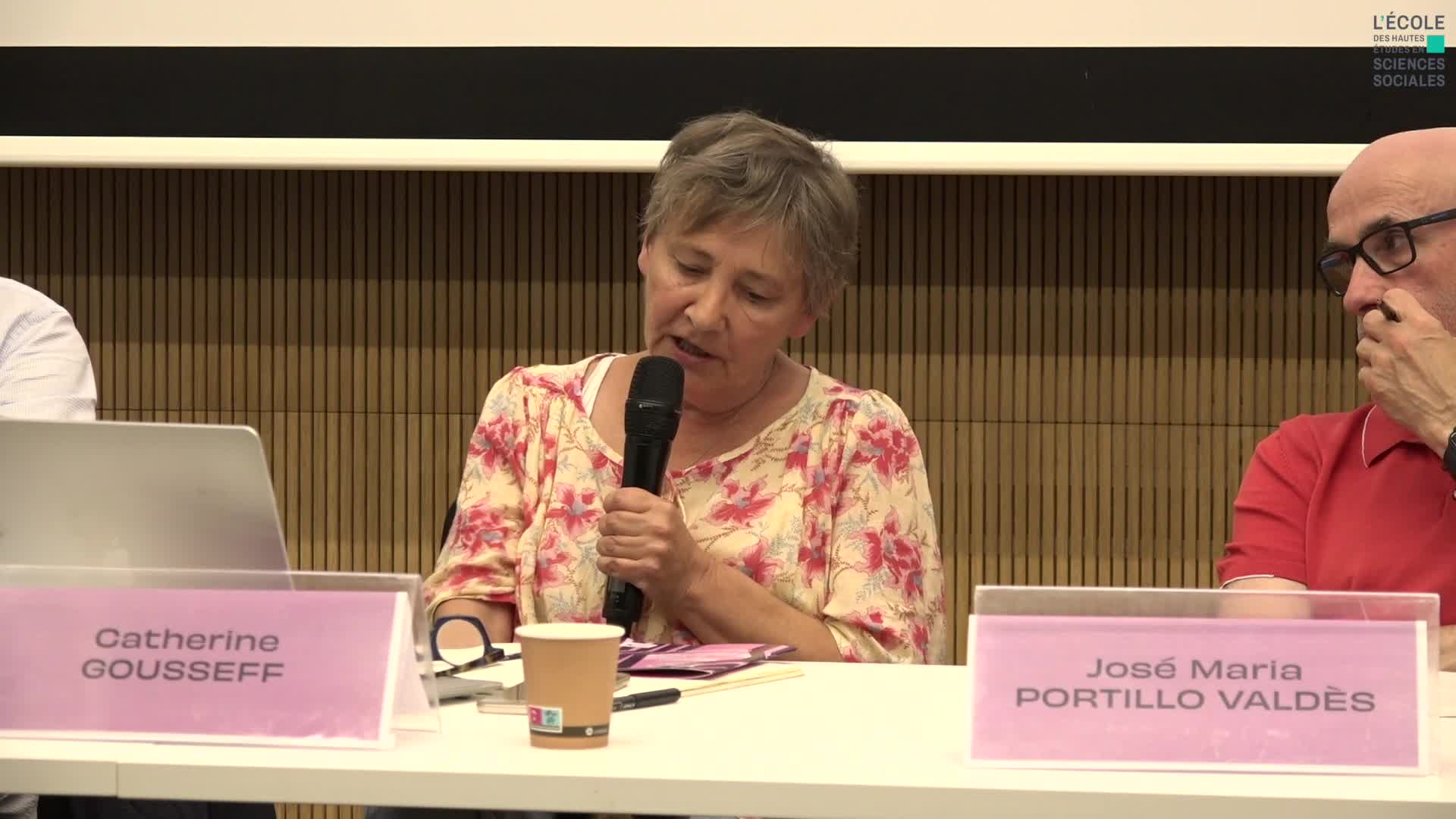Notice
Seminario RITMO – David Stuart (University of Texas at Austin) : ‘Half Time’ among the Classic Maya : Katun Subdivisions and their Ceremonies / Nikolai Grube (Uni-Bon) comentarista
- document 1 document 2 document 3
- niveau 1 niveau 2 niveau 3
Descriptif
My presentation will take a new look at terminology used by Classic Maya scribes to describe major subdivisions of time, especially within the k’atun. Some of these terms and phrases were first identified in the days of Morley and Thompson, but with little if any regard to their ritual or wider cosmological meanings. Several new inscriptions and text readings allow for a reappraisal of the evidence, especially focused on Stela A from Copan and the texts associated with Temple XIX at Palenque. These point to a special interest by Maya time-keepers in ritually marking the well-known half-point of the k’atun (half of 7200 days, or 3600 days [10.0.0]) as well as of the “hotun” (half of 1800 days, or 900 days [2.9.0]). I suggest that the latter calendar station, not previously identified in a systematic way, was marked by a ceremony called k’am ch’ajan, “the rope-coiling,” and depicted on the west face of the Temple XIX bench. Also relevant to this discussion is a further discussion of the term than-lam, “half diminished,” which provides insights into the phenomenology of time and its animate aspects. The ritualistic and rhetorical concern with “mid-points” reflects a larger structural conception, defining time in terms of broader categories of centrality and bilateral symmetry.
Thème
Sur le même thème
-
Écouter l’écho d’une forêt exploitée / Carnet de passages S02E04
Becerril AcevesJosemaríaPitzalisJuliaPeyrautLolaMontécotRobinPayssanAlexiJosemaría Becerril Aceves nous relate, au cœur des bois du Yucatán au sud du Mexique, son expérience auprès d’un village maya sylvicole. Entre rapport à la nature complexe et dialogue délicat, se
-
Les invasions biologiques : quelles perceptions par le public ?
ArbieuHugoUgo Arbieu, chercheur post-doctorant à l'université Paris Saclay, montre dans cette vidéo l'intérêt de la culturomique pour étudier la perception sociale des invasions biologiques.
-
Reconfigurations de l’aptitude à être affecté : de la réception à l’émancipation, Spinoza à l’épreu…
BaudeyMatthieuCe projet s’appuie sur une mission de terrain de quatre mois au Kazakhstan pendant laquelle il s’agit de mener des entretiens qualitatifs avec les membres de différents mouvements sociaux, culturels
-
JRSS 2022 - Session de clôture
Session de clôture des 16è Journées de Recherche en Sciences Sociales (15 et 16 décembre 2022) à la MSH de Clermont-Ferrand.
-
JRSS 2022 - Session d'ouverture
Session d'ouverture des 16è Journées de Recherche en Sciences Sociales (15 et 16 décembre 2022) à la MSH de Clermont-Ferrand.
-
Engagement dans les sciences sociales : contraintes et tensions dans le monde 2/2
VegSebastianКопосовНиколай ЕвгеньевичBehrValentinKarsentiBrunoJouanjanOlivierLadier-FouladiMarieLes sciences sociales, en tant que savoirs critiques et émancipateurs, sont exposées aux tensions politiques des contextes où elles se produisent.
-
Autorité et autonomie des sciences sociales : construire une communauté de pairs 4/1
KarsentiBrunoSabbaghDanielMarzoukiNadiaFabianiJean-LouisFriedlanderJudithTerziCédricOrléanAndréSi les connaissances produites par les sciences sociales peuvent jouir d’autorité dans l’opinion, c’est qu’elles se soumettent à des règles méthodologiques, à des modes d’administration de la preuve
-
Les sciences sociales dans la cité : demandes publiques, contraintes, expertises 2/1
DaucéFrançoiseBozarslanHamitPortilloJosé MaríaGousseffCatherineAktarO. CengizZevounouLionelLes sciences sociales sont dans un rapport intérieur à la cité qui justifie qu’on les interroge et qui fonde un certain nombre d’attentes légitimes à leur égard, que ce soit de la part des pouvoirs
-
Ouverture du colloque Sciences sociales en danger ? 1/1
ProchassonChristopheKarsentiBrunoThireauIsabelleOuverture du colloque Sciences Sociales en danger ? Pratiques et savoirs de l'émancipation, 22 et 23 septembre 2022 au Centre des colloques au Campus Condorcet, par Christophe Prochasson, président de
-
LES « DIT-ON » ET AUTRES RÉCITS PLUS SÉRIEUX - INTERVIEW DE JEAN-PAUL COLLEYN
ColleynJean-PaulInterview de Jean-Paul Colleyn dans le cadre de la sortie du livre, "Les « dit-on » et quelques autres récits plus sérieux" publié le 16 février 2023 dans la collection "54" des Éditions de la FMSH.
-
Anne Sedès et Nicolas Thély - À propos de #JournéeEcologieClimaRNMSH - Ouverture de la journée
ThélyNicolasSédèsAnneOuverture de la journée
-
La MSH de Clermont-Fd en 3'33
Découvrir la Maison des Sciences de l'Homme de Clermont-Ferrand en 3 minutes et 33 secondes...













